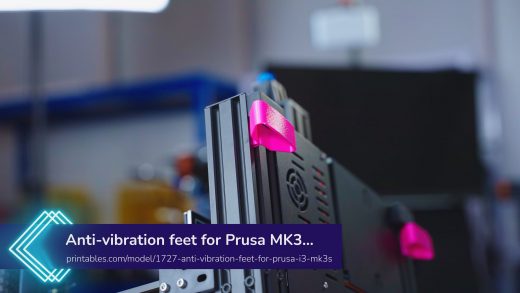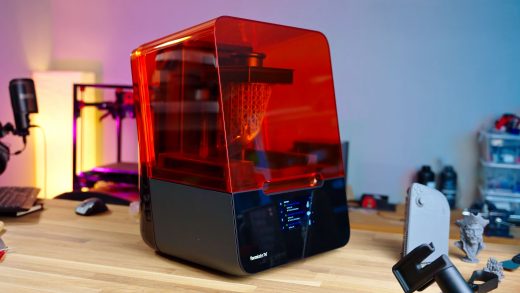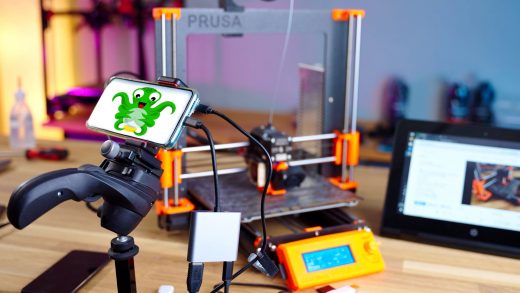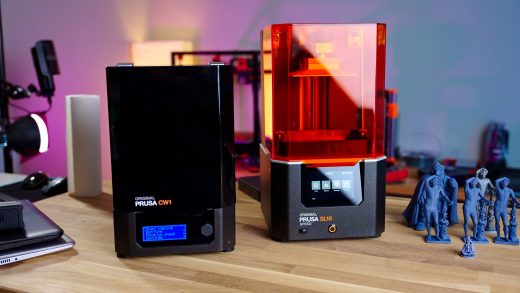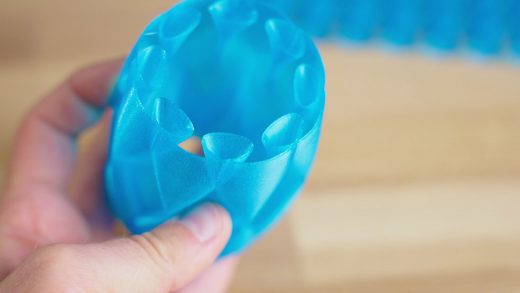Getting rid of ringing artifacts is a bit more complex than it seems at first, but, good news, the solution that performed the best was also the simplest one. I tried four different setups, including bolting a concrete paver straight to the printer, and I want to share the results with you and I think I can even explain what’s happening in each one. For these tests, I thought I’d use one of the machines I don’t usually grab, so I got the Steality Ender-3 v2 out of storage. ThisContinue reading
Review Formlabs Form 3+
Before we start, I feel like I should point out that the Formlabs Form 3+ is 4400€ just by itself, making it the most expensive printer I’ve reviewed on the channel. It’s also using the most expensive consumables of any printer I’ve tested so far, and all this can make the Form 3+ seem like it’s a really bad deal compared to simpler printers that literally cost 1/10th as much to buy and run. I’m going to keep making comparisons throughout the review to some of those, but the thingContinue reading
Review E3D´s RapidChange Revo
It’s time to take an in-depth look at E3D’s newest hotend ecosystem – the RapidChange Revo. You get the new quick-swap nozzlebreaks, a new self-regulating heater, an optional smaller form factor, significantly better performance and a new patents package that makes sure nobody will ever be making nozzles or heaters without E3D’s approval. After using the Revo for a couple of weeks and putting it through one of the most extensive testing sets I’ve ever done on a product, I’ve got some thoughts, graphs, and numbers I want to shareContinue reading
mycusini 2.0 Review
It’s chocolate! Fresh out of a 3D printer! That’s kind of amazing, but I’ve got questions, like: Can the mycusini 2.0 provide more than just amazement? Will it fall apart like the mycusini 1.0 that I unboxed? Is it actually practical to 3D print with chocolate? How expensive is it to run? So this is the mycusini 2.0 from Print4Taste GmbH, a German company that’s actually less than an hour away from me. They’ve been around for a while. At first, they’ve been making “prosumer” or “professional” level machines withContinue reading
The fastest way to make crisp PCBs at home!
What if you want to make a PCB, like, right now and not wait for a PCB fab to make them and send them to you? Or, what if you want other stuff etched into a copper layer that would be hard to pack into the Gerber files that board houses want? Well, if you have an MSLA resin printer, honestly, you’ve already got a pretty much perfect tool for the job. We’re going to try a quick and dirty method today, that is, one of the ways is quick,Continue reading
How bad is wet Filament really?
What I’ve been up to last week was trying to find out how much and how quickly filament absorbs water and what the results of that are. While there’s no question that filaments like PA, Nylons, as well as PVA, absolutely need to be kept in a moisture-controlled storage solution, with the more common stuff like PLA or PETG, it’s not that clear. Sure, PETG does absorb some moisture and you’ll get some extra stringing, but how bad could it be, and is PLA just generally fine to be keptContinue reading
Octoprint on Android with Octo4a
If you’ve tried to buy a Raspberry Pi recently, you’ll have noticed that that is actually quite hard to do right now. For example, for the 4GB Raspberry Pi 4 that used to sell for around 50 bucks, the cheapest offer that actually has them in stock is starting to demand scalper prices closer to 100 bucks. So if you want to run OctoPrint and still need a quality power supply and USB cable, a webcam, and SD card, you could end up spending close to 150 bucks. But whatContinue reading
Prusa SL1S Review
This is the Prusa SL1S – and it’s pretty fast! In fact, in most cases, it’s faster than every 3D printer I own, including filament-based ones. This is a resin printer, obviously. It’s also the smartest 3D printer I’ve ever used, to the point where sometimes it’s even outsmarting itself. And it’s also the most expensive 3D printer setup that I have, coming in at almost 2,000€ for the printer itself or 2,500€ for the bundle with the CW1S curing and washing machine, which you should definitely get if youContinue reading
Full Control GCode
Okay, you all know how 3D printing works. You start out by creating a 3D model, export that as stl or 3mf, then import that into a slicer, which then creates the gcode that the printer understands. Except that it doesn’t have to be that way. Enter Full Control GCode. This is actually the result of a research paper by Dr. Andrew Gleadall, and it lets you skip modeling and slicing and instead provides you with a scripting interface that controls every single printing move. You get full control. AndContinue reading

